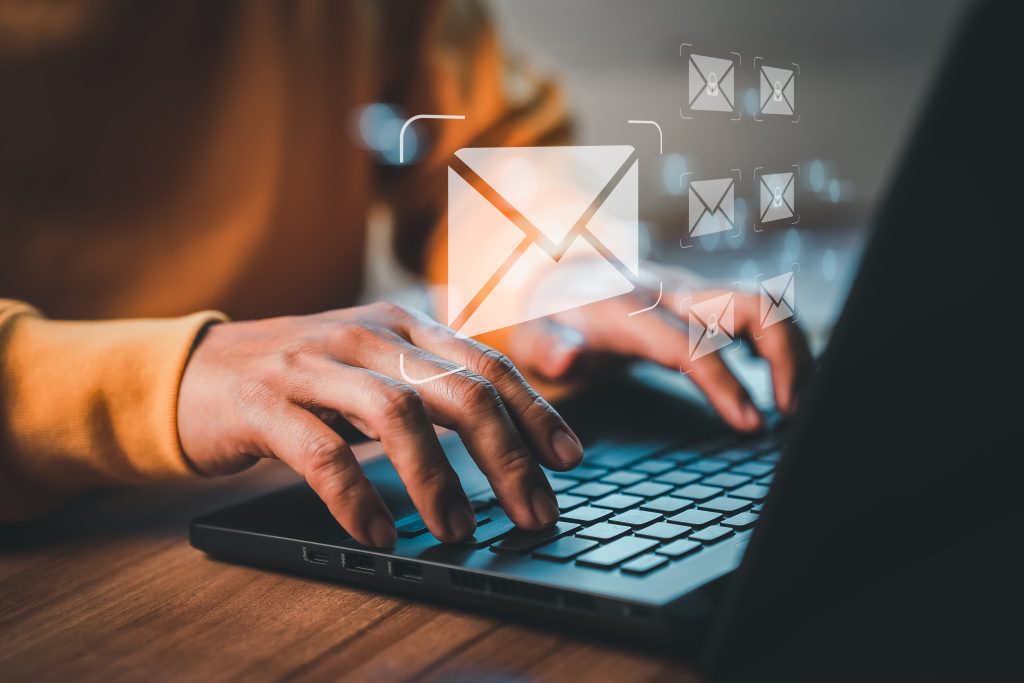Are you noticing an uptick in conversations around email authentication? There’s a good reason for it. With the growing number of phishing attacks, protecting your business email deliverability has never been more critical. These attacks are the leading cause of data breaches and have been for some time.
Email service providers are now making email authentication a must-have, not just an optional security feature. This shift is vital for maintaining your business’s online presence and ensuring secure communication.
In February 2024, giants Google and Yahoo introduced a new DMARC policy, marking a pivotal change for businesses using Gmail and Yahoo Mail to send emails. This move underscores the necessity of email authentication.
But what exactly is DMARC, and why has it suddenly become indispensable? We’re here to guide you through the essentials of email authentication and explain its importance for your business.

The Threat of Email Spoofing
Imagine you receive a legitimate-looking email from your bank urging immediate action. You click a link and provide your details, and suddenly, your information is in the wrong hands.
This is known as email spoofing. Fraudsters masquerade as reputable entities, attempting to appear as legitimate businesses to deceive customers and vendors. The impact of such deceit on businesses can be severe, leading to financial loss, reputational damage, data breaches, and lost business opportunities.
With email spoofing on the rise, implementing email authentication has become a vital protective measure.
Understanding Email Authentication
Email authentication helps verify your emails’ legitimacy, confirm the sending server’s identity, and report unauthorized use of your domain.
It involves three primary protocols, each with a specific role:
- SPF (Sender Policy Framework):
Identifies IP addresses authorized to send emails from your domain. - DKIM (DomainKeys Identified Mail):
Enables domain owners to add a digital signature to emails, affirming their authenticity. - DMARC (Domain-based Message Authentication, Reporting, and Conformance):
Directs receiving servers on handling emails based on SPF and DKIM check and notify domain owners of spoofing attempts.
SPF and DKIM lay the groundwork for protection, while DMARC offers crucial security intelligence, preventing misuse of your domain in spoofing attacks.
Implementing DMARC involves:
- Creating a DMARC record in your domain settings, indicating authorized IP addresses to email services like Google and Yahoo.
- The receiving server checks for authorization When your email reaches its destination.
- The server then acts according to your DMARC policy, choosing to deliver, reject, or quarantine the email.
- You receive DMARC reports, providing insights into email delivery and potential domain spoofing.
The Importance of Google & Yahoo’s DMARC Policy
While Google and Yahoo have always filtered spam, their latest DMARC enforcement elevates email security standards. As of February 2024, businesses sending more than 5,000 emails daily are required to implement DMARC, with additional policies for lower volumes focusing on SPF and DKIM authentication.
Continual updates in email authentication protocols mean keeping abreast of these changes is essential for ensuring your emails reach their intended recipients.
The Advantages of DMARC Implementation
Embracing DMARC brings many benefits that help protect your business’s online identity and communication. Here’s how:
- Protecting Your Brand’s Reputation: DMARC protects your brand from being impersonated in phishing scams by preventing spoofing. For example, without DMARC, scammers could easily send emails from an address appearing to be yours, tricking your customers into divulging sensitive information. With DMARC, these attempts can be blocked or flagged, keeping your brand’s integrity intact.
- Enhancing Email Deliverability: DMARC ensures that your legitimate emails are recognized by email providers, significantly reducing the chance of being mistakenly marked as spam. This means that your important announcements, newsletters, and correspondence reach your audience as intended. An example of its effectiveness is seen in marketing campaigns, where a higher inbox placement rate directly correlates to better engagement metrics.
- Providing Valuable Insights: DMARC reports give you a clear view of your email ecosystem, showing which emails are being authenticated and which ones aren’t. These reports can help you identify unauthorized use of your domain, allowing you to react promptly. They also offer metrics on delivery success rates, helping you to refine your email strategy over time for optimal performance.
Action Steps: Implementing DMARC
With the stakes higher than ever in email security, adopting DMARC is essential. Here’s how you can get started:
Understand Your DMARC Options: Familiarize yourself with DMARC policies (none, quarantine, reject) and decide which level of protection suits your business. Starting with a ‘none’ policy allows you to collect data without affecting your email flow, moving to stricter policies as you adjust.
Consult with Experts: Expert advice can smooth the implementation process, whether your in-house IT team or an external IT security provider provides it. They can help correctly set up your DMARC record and interpret the initial data.
Regular Monitoring and Adjustment: DMARC is not a set-and-forget tool. Review your DMARC reports regularly to understand your email sending practices and identify any unauthorized activity. Adjust your DMARC policy as needed to tighten security while ensuring legitimate emails are delivered efficiently.
Practical Tip: Begin with a monitoring mode by setting your DMARC policy to ‘p=none.’ This approach allows you to see reports and understand how your emails are handled without impacting deliverability. Over time, as you become more comfortable with the process, move to more restrictive settings to enhance protection.
Support for Email Authentication and DMARC
Implementing DMARC and broader email authentication measures is pivotal in today’s business. If the process seems daunting or you’re unsure where to start, we’re here to help!
Contact us to explore how our expertise in email security can improve your defenses and ensure your email communication remains trusted and effective. Whether it’s setting up your DMARC policy, interpreting your reports, or crafting a comprehensive email security strategy, our team is ready to help you navigate these essential steps. Get in touch today!



